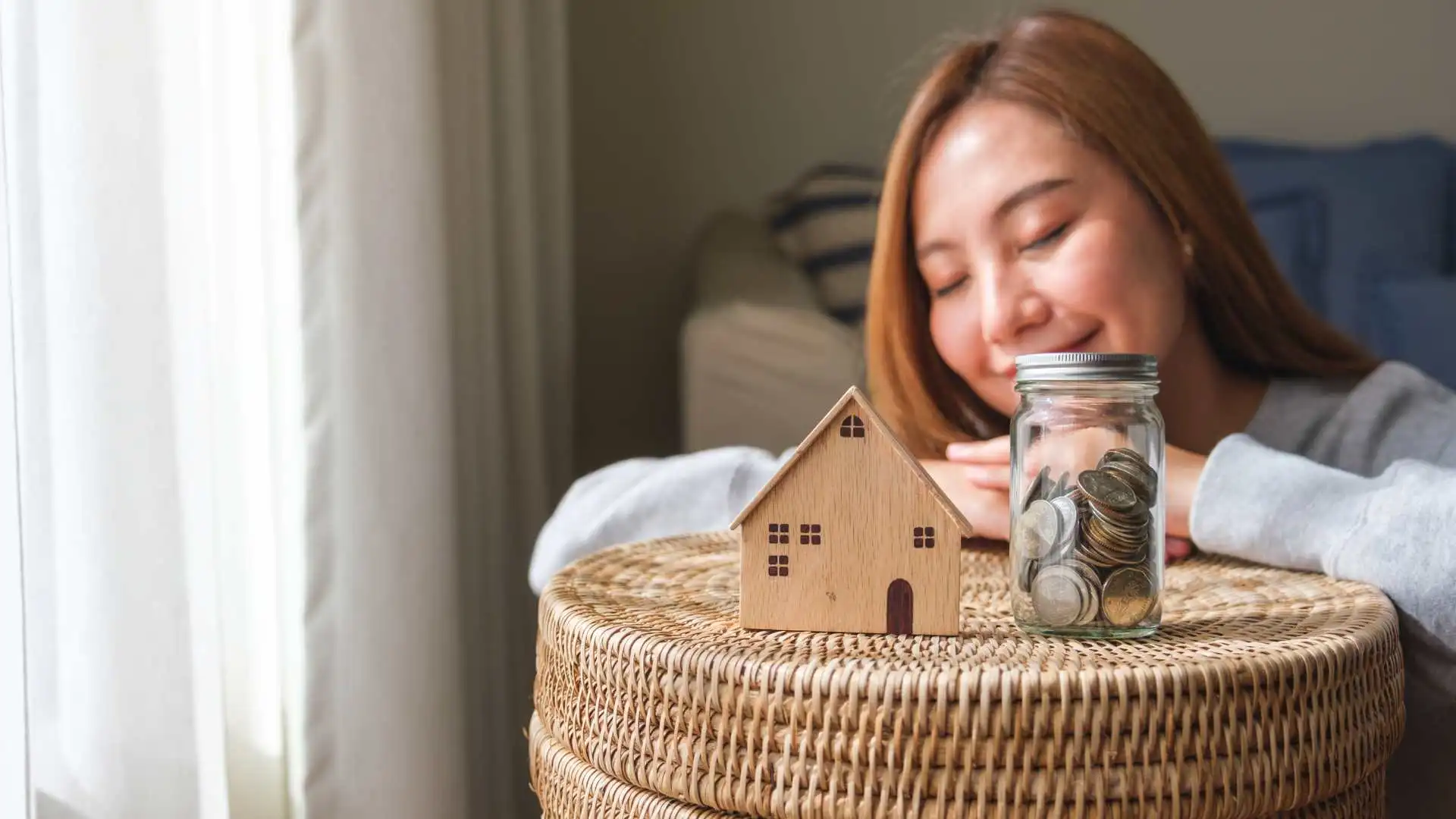Table of Contents
More Than Just a Mortgage Payment
When does buying a house actually make sense? It’s one of the most common questions Americans ask themselves in 2025. The decision isn’t easy with mortgage rates sitting at 6.5%, home prices near historic highs, and rents still demanding a big chunk of monthly paychecks.
The truth is, buying a home doesn’t automatically save you money. In fact, in the first few years, renting is often cheaper. That’s because the upfront costs of buying, from closing fees and moving expenses to maintenance and taxes, make ownership more expensive at the beginning.
The break-even point is when the long-term benefits of ownership (building equity, appreciation, tax perks) finally outweigh the initial costs. Understanding where that point lies can mean distinguishing between a smart investment and a financial trap.
What the Break-Even Point Really Means
The break-even point is simple: the number of years you need to stay in a home before buying becomes cheaper than renting.
If you sell before hitting that break-even point, you’ll likely lose money compared to what you would have spent renting. Stay past it, and buying usually becomes the better deal.
This isn’t just about pride of ownership. It’s about timing and math. Without calculating this, many families end up “house poor,” selling too soon, and losing their hoped-for financial advantages.
Read related blog: Top 10 Hidden Costs of Buying a Home Most Buyers Miss
The Main Ingredients of the Break-Even Equation
You must factor in more than the monthly mortgage to calculate your break-even. Here’s what really goes into the equation:
- Upfront Costs: Down payment, closing, moving expenses, furnishings, and initial repairs.
- The Ongoing Ownership Costs include mortgage principal and interest, property taxes, homeowners’ insurance, HOA fees, maintenance, and utilities.
- Comparable Rent: What you’d pay monthly for a similar home in the same area.
- Home Appreciation: How much your home might increase in value annually.
- Tax Benefits: Mortgage interest and property tax deductions.
- Selling Costs include realtor commissions (often 5%–6%) and other fees when you sell.
When you stack ownership costs against renting costs, the “break-even” is the year when the ownership line dips below the renting line.
A Step-by-Step Example: The $350,000 House
Let’s walk through an example that shows how this works in 2025.
- Purchase Price: $350,000
- Down Payment: 10% ($35,000)
- Loan Amount: $315,000 at 6.5% interest
- Monthly Mortgage (principal + interest): ~$1,995
- Taxes & Insurance: ~$400/month
- Total Ownership Cost: ~$2,400/month
Now compare to renting:
- Comparable Rent: ~$2,100/month
At first glance, renting saves you $300/month. But that’s just the surface.
Upfront Costs of Buying:
- Closing costs (3% of purchase): ~$10,500
- Moving + furnishings: ~$5,000
- Initial repairs: ~$3,000
- Total upfront: ~$18,500
Annual Maintenance: ~$4,000 (1% of home value)
Now let’s consider appreciation:
- Assume 3% annual home value growth. After 5 years, the home is worth ~$405,000.
- Meanwhile, you’ve built equity by paying down your mortgage.
After doing the math, the break-even point in this scenario is around 5–6 years. That means renting would have been cheaper if you had stayed in the house for less than that. Stay longer, and ownership becomes a better deal.
Renting vs Buying a $350,000 Home in 2025
| Year | Renting (Monthly $2,100) | Buying (Monthly $2,400 + Upfront Costs) | Equity Built | Cumulative Difference | Who’s Ahead? |
| 1 | $25,200 | $46,300 (incl. $18.5K upfront) | $5,000 | -$16,100 | Renting |
| 3 | $79,200 | $95,500 | $20,000 | -$3,700 | Renting |
| 5 | $132,000 | $144,000 | $50,000 | +$38,000 | Buying |
| 7 | $184,800 | $192,500 | $85,000 | +$77,300 | Buying |
| 10 | $264,000 | $270,000 | $140,000 | +$134,000 | Buying |
Assumptions:
- Median rent = $2,100/month (2025 levels).
- Buying = $350,000 home, 10% down, 6.5% mortgage, $18.5K upfront costs.
- Annual home appreciation = 3%.
- Rent increases 2% annually.
- Equity = combination of mortgage paydown + appreciation.
Key Takeaway: Renting is cheaper in the early years, but by Year 5–6, ownership catches up to the break-even point. From there, equity growth tilts the scale strongly toward buying.
Break-Even vs Opportunity Cost of Renting
The math changes when you consider what renters could do with their savings. Suppose renting is $300 cheaper per month than owning. If a renter invests that $300 every month in an index fund earning 6% annually, in five years, they’d have around $20,000 saved. Over 30 years, that grows to nearly $300,000.
This means renters with financial discipline can build wealth without owning a home. But the keyword is discipline. Homeowners build equity automatically by paying their mortgage.
Renters must choose to invest, month after month, even when life gets expensive. That’s why the break-even calculation isn’t just about numbers but behavior.
Read related blog: Financial Checklist for Buying Your First Home
How Life Changes Reset Your Break-Even Clock
Break-even assumes you stay in your home long enough. But life doesn’t always cooperate. Job transfers, promotions, new babies, divorce, or the need to care for a parent can all force you to move earlier than expected. You may face losses from realtor commissions and moving costs if you sell before break-even.
Homeownership works best for those confident they’ll stay put for at least 5–7 years. If your life stage is uncertain, renting may provide the flexibility you need without risking a financial setback.
Why Location Changes Everything
Your break-even point isn’t just about your finances; it’s about where you live.
- High-cost metros (San Jose, New York, Seattle): Break-even can stretch to 10+ years because mortgages are far higher than rents.
- Midwestern and Southern cities (Cleveland, Dallas, Atlanta): Break-even is often closer to 4–6 years because ownership costs and rents are more aligned.
- Suburbs vs Urban cores: Suburban homes may break even faster due to lower purchase prices, while city condos with high HOA fees may take much longer.
Understanding regional dynamics is key. A decision that makes sense in Cleveland might be a losing bet in San Francisco.
The Role of Inflation in Break-Even Math
Inflation is often overlooked in the rent vs. buy debate. For renters, inflation means higher rent renewals yearly, eating more of their paychecks. For owners with a fixed-rate mortgage, inflation works in their favor — their monthly principal and interest stay flat, while their home value rises and their wages (hopefully) increase.
In periods of high inflation, break-even can arrive faster for homeowners. Their costs stabilize, while renters keep paying more each year.
Tax Perks That Tilt the Break-Even Equation
Tax benefits are another factor often forgotten in quick break-even calculators:
- Mortgage interest deduction: Especially meaningful in the early years when interest is a large part of your payment.
- Property tax deduction: In some states, this reduces taxable income significantly.
- Capital gains exclusion: When you sell your primary home, you may exclude up to $250,000 ($500,000 for couples) in gains.
These perks can shave years off your break-even timeline, though they depend on your income bracket and state tax laws.
Break-Even for Different Buyer Profiles
Not all buyers face the same math. For example:
- First-time buyers: Small down payments mean higher monthly costs, pushing break-even further out.
- Move-up buyers: Equity from a previous home can shorten the break-even on the next one.
- Retirees downsizing: For them, break-even is less about dollars and more about lifestyle and reducing expenses.
This shows why the break-even equation isn’t one-size-fits-all.
Read related blog: How to Use a 401(k) to Buy a House (And Should You?)
Renting After Buying: When Break-Even Isn’t the End
What if you don’t sell when you move, but rent your house out? Suddenly, the break-even equation changes. A property that wasn’t profitable as your residence might generate positive cash flow as a rental.
This advanced strategy turns break-even into a stepping stone toward wealth-building. Instead of worrying about when ownership overtakes renting, you shift the frame: your home becomes an investment property supporting long-term financial goals.
Hidden Costs That Push Your Break-Even Point Further
Even well-prepared buyers miss expenses that delay their break-even:
- Repairs and replacements: A new roof or HVAC system can save you $10–$15K back.
- HOA special assessments: Surprise fees for building repairs.
- Commuting costs: Longer drives from affordable suburbs can erode your savings.
- Opportunity cost: The $40,000 you used for a down payment could have been invested elsewhere.
These hidden factors explain why many Americans think they’re “breaking even” sooner than they really are, when they’re still in the red.
The Psychological Break-Even: Not Just Dollars
Break-even isn’t only about math. It’s also about peace of mind.
For some families, the psychological benefits of owning — stability, control over your space, pride of ownership — are worth the higher costs even before the financial break-even point. For others, the stress of unexpected bills and the fear of being “trapped” in a mortgage outweighs the pride.
Acknowledging the emotional side of the equation is just as important as crunching the numbers.
The Danger of Miscalculating Break-Even
Many online rent vs buy calculators are overly simplistic. They ignore maintenance, selling costs, or tax benefits, leading families to believe they’ll break even in three years when the reality is closer to seven.
This miscalculation can be devastating if you buy expecting to move soon and sell at a loss. A good break-even analysis should be holistic, not just comparing rent and mortgage payments.
Break-Even in the Age of Remote Work
Remote work has shifted the map. Families who once needed to buy near city centers now have the flexibility to move to suburbs or smaller towns where homeownership costs are lower and break-even arrives faster.
Conversely, some urban buyers justify higher ownership costs because they save on commuting and lifestyle expenses. Your break-even point today isn’t just about your house; it’s about where your work allows you to live.
Hidden Costs That Can Delay Your Break-Even Point
| Cost Category | Typical Range (2025) | How It Delays Break-Even |
| Major Repairs | $5,000–$15,000 (roof, HVAC, plumbing) | Large, unexpected expenses eat into equity gains and may force debt use. |
| HOA Fees & Assessments | $100–$1,000/month + $2,000–$10,000 one-time | Increases monthly housing costs and adds surprise bills that offset equity growth. |
| Property Taxes | 1%–2% of home value annually | Rising taxes raise ownership costs, pushing break-even further out. |
| Insurance Premiums | $1,500–$3,500/year (higher in disaster-prone areas) | Premium hikes can quietly add thousands over the years. |
| Utilities (House vs Apartment) | $200–$400 more per month | Larger homes cost more to heat, cool, and power, increasing ownership expenses. |
| Commuting Costs | $2,000–$5,000/year (gas, parking, extra vehicle) | Buying further from work adds hidden lifestyle costs. |
| Opportunity Cost | $30,000–$60,000 down payment | Money tied up in a home can’t be invested elsewhere for potential returns. |
Key Takeaway: Even if the math suggests a 5–6 year break-even, these hidden costs can add years to the timeline, unless you budget carefully and build financial cushions.
Read related blog: How to Save Money for a Down Payment on a House
How to Shorten Your Break-Even Point
While you can’t control mortgage rates, there are smart ways to bring your break-even closer:
- Buy modestly: Choose a home below your max pre-approval to reduce monthly costs.
- Increase your down payment: This lowers the loan amount and interest over time.
- Shop for insurance & loans: Small rate differences save thousands long-term.
- Refinance later: If rates fall, refinancing can significantly speed up break-even.
- Stay put: The longer you hold, the more appreciation and equity tip the scale in your favor.
Even small choices like skipping a $500,000 “stretch house” for a $350,000 starter can shave years off your break-even.
How Beem Helps Families Stay Steady Through Break-Even
Here’s the truth: the biggest threat to reaching break-even isn’t the math; it’s the surprises.
- A sudden $1,200 property tax bill.
- A $700 appliance repair.
- Closing costs ran higher than expected.
These curveballs often push families into debt, making it harder to stay in their homes long enough to reach the break-even line.
Beem’s Everdraft™ gives you up to $1,000 in emergency funds, interest-free, with no credit checks. It’s designed to help hardworking families cover short-term gaps so they don’t lose sight of the long-term goal: building wealth and stability through ownership.
By keeping you afloat through rough patches, Beem ensures you reach the break-even point without giving up too soon.
Beem offers instant cash for emergencies up to $1000 with no interest, no credit checks, no due dates, and no income restrictions. Just quick access to funds when you need them the most.
Read related blog: Building Generational Wealth: Buy or Rent?
Know Your Number Before You Buy
Buying a home isn’t just about whether you can afford the monthly mortgage. It’s about knowing how long it takes for ownership to make sense compared to renting. For some families in 2025, that number might be five years. For others in high-cost metros, it could be a decade or more.
The key is preparation: running the numbers, anticipating hidden costs, and building buffers for the unexpected. Because the break-even point isn’t a magical threshold, it’s a test of resilience.
Homeownership can still be one of the strongest tools for building generational wealth if you can stay steady through the early years. And with tools like Beem by your side, you don’t have to let the surprises knock you off course. Download the app now!
FAQs on Calculate Your Break-Even Point When Buying a House
What is a break-even point when buying a house?
It’s the number of years you need to stay in a home before buying becomes cheaper than renting, once you factor in upfront costs, ongoing expenses, and appreciation.
How do I calculate my personal break-even point?
Add up your buying costs (down payment, closing, monthly mortgage, taxes, insurance, maintenance) and compare them to renting costs. Then factor in equity growth and appreciation to see when ownership overtakes renting.
What’s the average break-even time in 2025?
In most US markets, it takes 5–7 years. It may take 10+ years in expensive metros, while it can be as short as 3–4 years in affordable cities.
What costs delay the break-even point the most?
Closing costs, maintenance, and unexpected repairs are the biggest culprits. They can push your break-even point out by years if not planned for.
How does Beem fit into the break-even equation?
Beem helps cover the surprises, from repair bills to closing gaps, so you can stay the course and reach your break-even point. By avoiding overdrafts or high-interest debt, you keep your finances intact and your long-term plan on track.















































